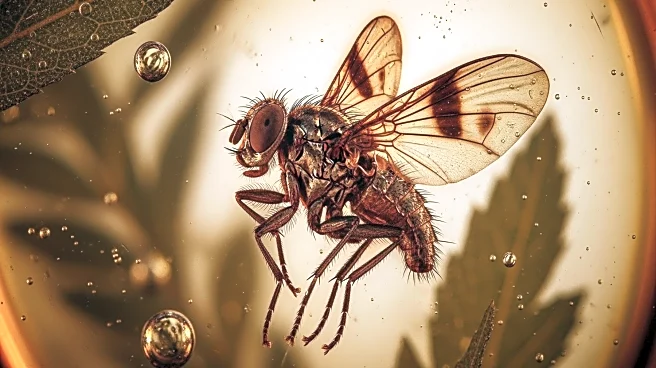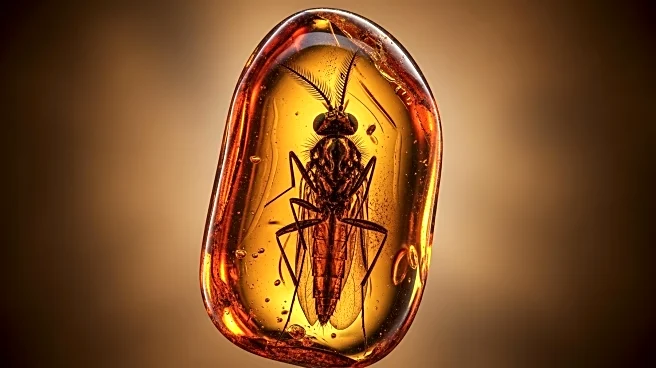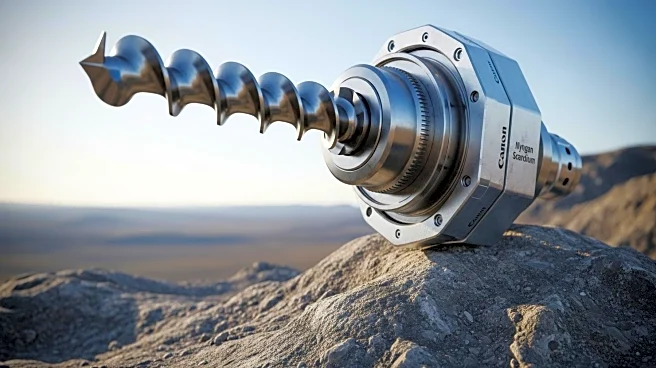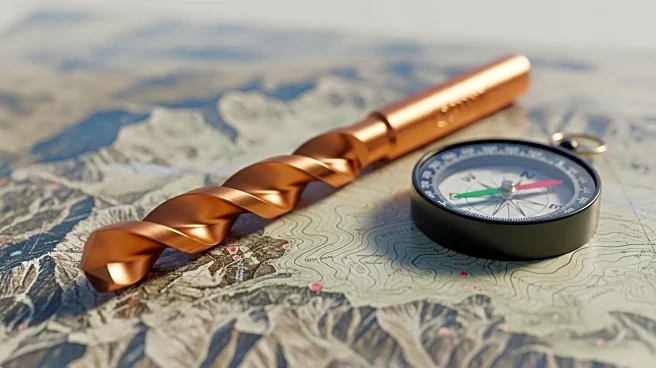What's Happening?
An international team of researchers has identified a new species of fossilized insect from the Jurassic period in Australia, estimated to be 151 million years old. This discovery, led by the Doñana Biological
Station, marks the oldest known member of the Chironomidae family found in the Southern Hemisphere. The fossil reveals a unique evolutionary feature: a structure that likely helped the insect attach securely to rocks, previously documented only in marine organisms. The fossil was uncovered in the Talbragar fish beds in New South Wales, and the study was published in the journal Gondwana Research. The newly identified species, named Telmatomyia talbragarica, suggests that this group of freshwater animals might have originated on the southern supercontinent of Gondwana.
Why It's Important?
This discovery challenges existing theories about the origins of the Podonominae subfamily, which were previously thought to have originated in northern Gondwana before spreading northward into Laurasia. The new findings provide strong evidence that the Podonominae subfamily most likely began in the Southern Hemisphere and later expanded worldwide. This has implications for understanding the distribution and evolution of species across the planet. The discovery also highlights the bias towards finding and studying fossils in the Northern Hemisphere, which can lead to incorrect assumptions about the origins of various groups.
What's Next?
The analysis of the fossilized specimens, combined with genomics, will help determine whether the dispersal of these insects after the breakup of Gondwana was primarily passive or active. This data will be valuable for comprehending and conserving modern-day biodiversity. Researchers aim to address the significant gap in the lineage's fossil record, which is limited by the lack of Southern Hemisphere fossils. Further studies may provide a more comprehensive understanding of this group's evolutionary history.
Beyond the Headlines
The discovery of the Talbragar fly offers insights into the formation and changes of Southern Hemisphere biotas through geological time. Fossil species of tiny, delicate freshwater insects are rare and help interpret the history of life on Earth. This research could lead to a reevaluation of how natural barriers like mountains or rivers have influenced the evolution and distribution of species.











